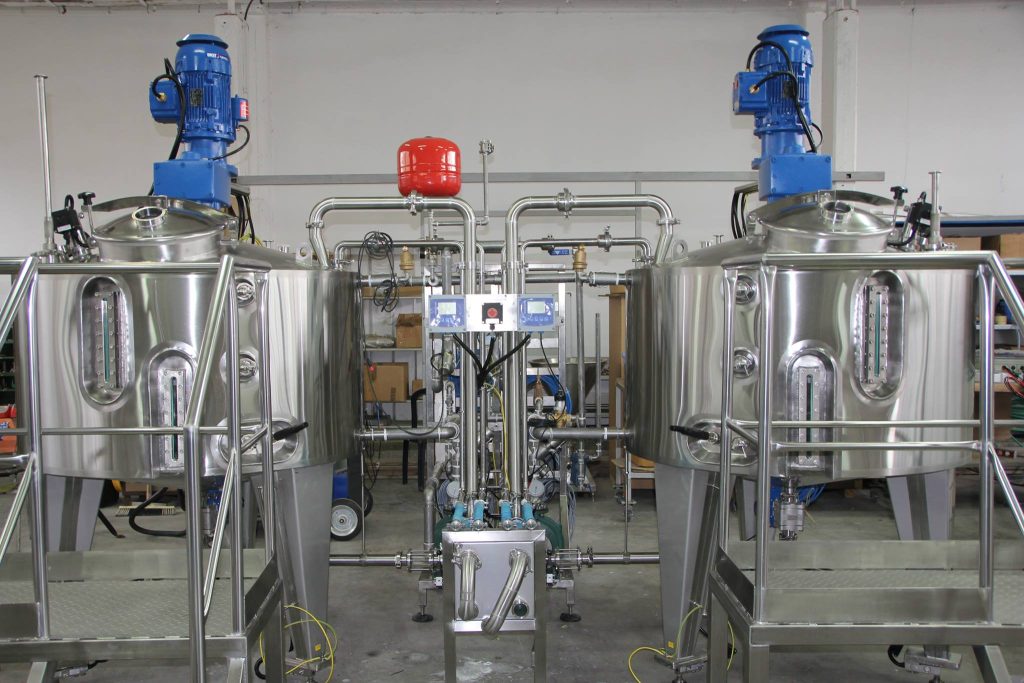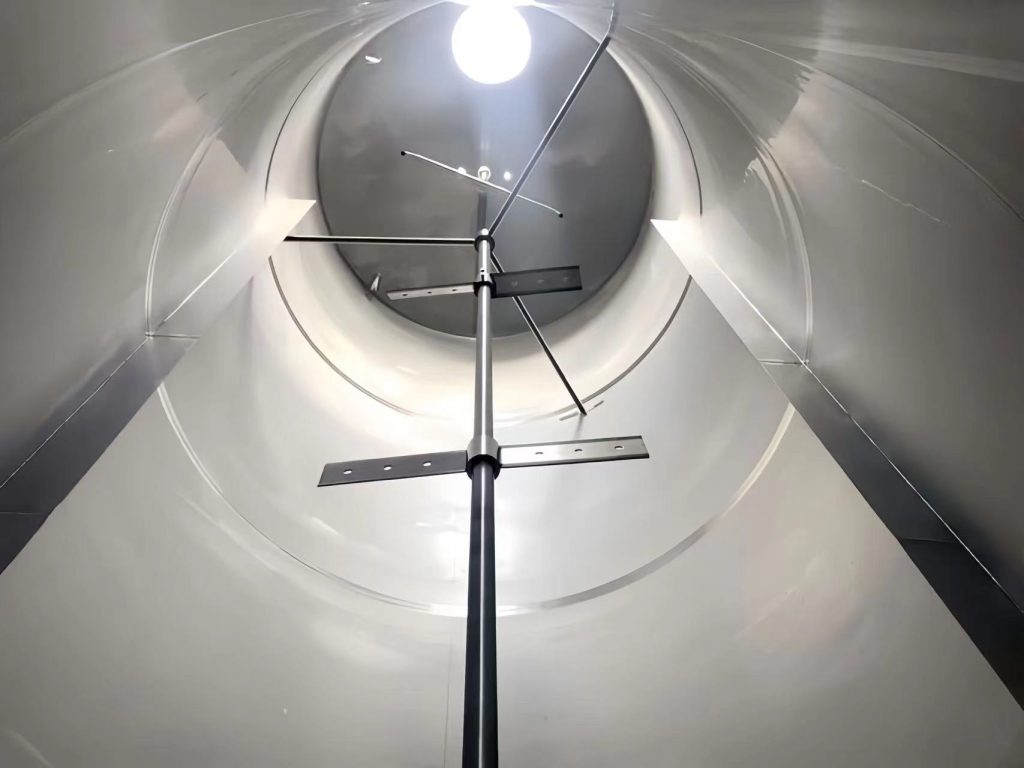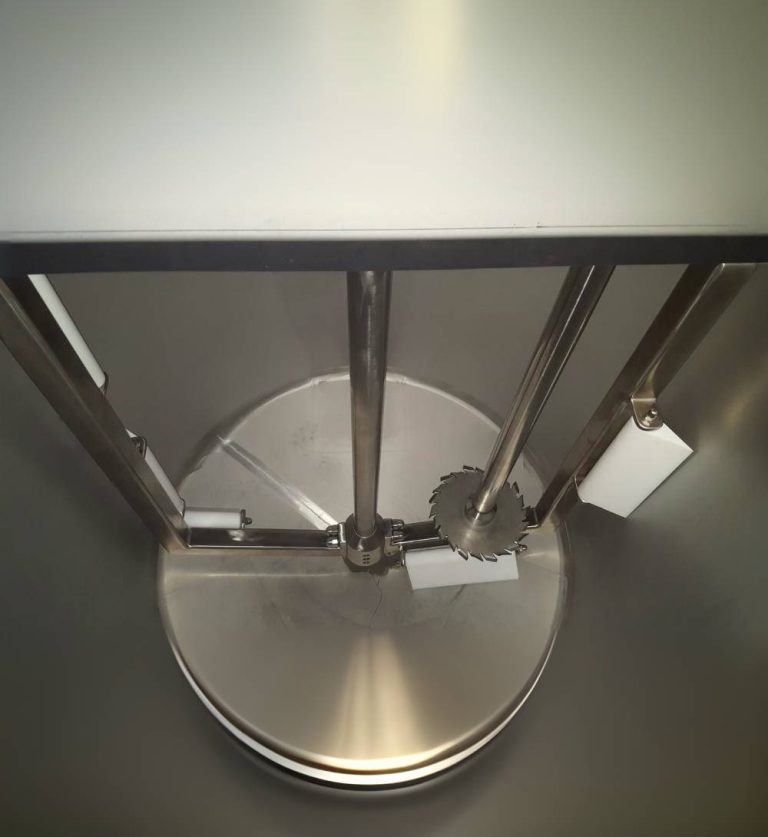Introducción

En la industria moderna de alimentos y bebidas, garantizar la calidad, la seguridad y la eficiencia en los procesos de producción es primordial. Un equipo que desempeña un papel crucial para lograr estos objetivos es el tanque mezclador de acero inoxidable. Este blog analiza en profundidad por qué los tanques mezcladores de acero inoxidable son indispensables en la producción de alimentos y bebidas, destacando sus beneficios, aplicaciones y consideraciones clave.
El rol de Stainless Mixing Tanks in Food and Beverage Production
Stainless mixing tanks are used extensively in food and beverage production for various applications, from blending ingredients to holding finished products. These tanks are designed to handle different types of mixtures and are built to meet stringent hygiene standards. Below, we explore their essential features and how they contribute to the production process.
Higiene y Seguridad
One of the primary reasons stainless mixing tanks are favored in the food and beverage industry is their hygienic properties. Stainless steel is non-porous and resistant to contamination, which helps in maintaining the purity and safety of food products. It is also easy to clean and sanitize, ensuring that no residue or bacteria remain after cleaning.
Benefits of Stainless Steel in Hygiene
| Característica | Acero inoxidable | Otros materiales |
|---|---|---|
| No poroso | Sí | No |
| Corrosion-Resistant | Sí | Varía |
| Easy to Clean | Sí | Difícil |
Durabilidad y longevidad
Stainless mixing tanks are known for their durability and long lifespan. Unlike other materials, stainless steel does not easily corrode, rust, or degrade, which makes these tanks a cost-effective investment for the long term. Their robust construction withstands the rigors of industrial use, including high temperatures and pressures.
Control de temperatura
Effective temperature control is vital in food and beverage production to ensure the quality and safety of products. Stainless mixing tanks are designed with features such as heating and cooling jackets that allow precise temperature regulation. This capability is crucial for processes like pasteurization and fermentation, where specific temperature ranges must be maintained.
Versatilidad en aplicaciones
Stainless mixing tanks are versatile and can be used for a variety of applications, including:
- Blending Ingredients: Ensuring uniform mixing of ingredients to achieve the desired consistency.
- Storing Products: Holding finished products under controlled conditions until they are ready for distribution.
- Fermentación: Providing an environment for fermentation processes in brewing and dairy production.
The adaptability of stainless mixing tanks makes them suitable for diverse food and beverage production needs.
Consideraciones clave al elegir un Stainless Mixing Tank
Selecting the right stainless mixing tank involves several factors to ensure it meets your production requirements. Here are some key considerations:
Capacity and Size
The capacity of a stainless mixing tank should align with your production volume needs. Tanks come in various sizes, so choosing one that fits your production scale and space constraints is crucial. Overestimating or underestimating capacity can lead to inefficiencies and operational challenges.
Type of Stainless Steel
Different grades of stainless steel are used in manufacturing mixing tanks. The choice of grade affects the tank’s performance and longevity. Common grades include:
- 304 Stainless Steel: Offers good corrosion resistance and is suitable for most food and beverage applications.
- 316 Stainless Steel: Provides enhanced corrosion resistance, especially in environments exposed to chlorides or high temperatures.
Características del diseño
The design of the mixing tank can influence its efficiency and ease of use. Key design features to consider include:
- Agitators and Mixers: Ensure the tank is equipped with appropriate agitation mechanisms for thorough mixing.
- Access Ports and Vents: Necessary for easy cleaning, maintenance, and handling of ingredients.
- Insulation and Heating/Cooling Systems: Essential for temperature-sensitive processes.
Comparison of Stainless Steel vs. Other Materials
Understanding the advantages of stainless steel compared to other materials can help in making an informed decision. Here’s a comparison table:
| Característica | Acero inoxidable | El plastico | Aluminio |
|---|---|---|---|
| Resistencia a la corrosión | Alto | Bajo | Medio |
| Durabilidad | Alto | Bajo | Medio |
| Facilidad de limpieza | Fácil | Difícil | Moderado |
| Tolerancia de temperatura | Alto | Bajo | Medio |
Applications in Different Food and Beverage Segments
Stainless mixing tanks are utilized across various segments of the food and beverage industry, each with specific requirements:
Industria láctea
In dairy production, stainless mixing tanks are used for blending milk, cream, and other dairy ingredients. The tanks’ ability to maintain strict hygiene standards and control temperatures is essential for producing high-quality dairy products.
Beverage Industry
For the beverage industry, stainless mixing tanks are employed in the production of juices, soft drinks, and alcoholic beverages. Their versatility allows for the handling of different types of liquids and the incorporation of various additives.
Bakery and Confectionery
In bakery and confectionery production, these tanks are used for mixing doughs, batters, and other ingredients. The tanks’ capacity and agitation features are tailored to meet the specific needs of these processes.
Mantenimiento y Cuidado de Stainless Mixing Tanks

Proper maintenance and care are crucial for the longevity and efficiency of stainless mixing tanks. Regular cleaning and inspection are necessary to prevent contamination and ensure optimal performance. Key maintenance practices include:
- Routine Cleaning: Following a standardized cleaning protocol to remove residues and prevent bacterial growth.
- Inspecciones: Regularly checking for signs of wear, corrosion, or damage.
- Repairs: Addressing any issues promptly to avoid operational disruptions.
Conclusión
Stainless mixing tanks are an essential component of modern food and beverage production, offering unmatched benefits in terms of hygiene, durability, temperature control, and versatility. Their role in maintaining product quality and safety cannot be overstated. When selecting a stainless mixing tank, it is important to consider factors such as capacity, material grade, and design features to ensure it meets your specific production needs. By investing in high-quality stainless mixing tanks and adhering to proper maintenance practices, you can enhance your production efficiency and product quality.
Preguntas más frecuentes
P: ¿Por qué stainless mixing tanks preferred over other materials in the food and beverage industry?
A:Stainless mixing tanks are preferred due to their non-porous nature, resistance to corrosion, ease of cleaning, and durability. These properties ensure that the tanks maintain high hygiene standards and have a long service life.
Q:What are the different grades of stainless steel used in mixing tanks?
A:The most common grades are 304 and 316 stainless steel. Grade 304 is suitable for most applications, while grade 316 offers enhanced corrosion resistance, especially in harsh environments.
P: ¿Con qué frecuencia debería stainless mixing tanks limpiarse?
A:Cleaning frequency depends on the type of product being processed and the tank’s usage. However, regular cleaning is essential to prevent contamination and maintain hygiene.
Q:Can stainless mixing tanks be customized for specific production needs?
A:Yes, stainless mixing tanks can be customized with features such as specific agitators, temperature control systems, and access ports to meet specific production requirements.
P: ¿Para qué mantenimiento se requiere? stainless mixing tanks?
A:Routine maintenance includes regular cleaning, inspections for wear or damage, and prompt repairs. Following a maintenance schedule helps ensure the tank’s longevity and optimal performance.

